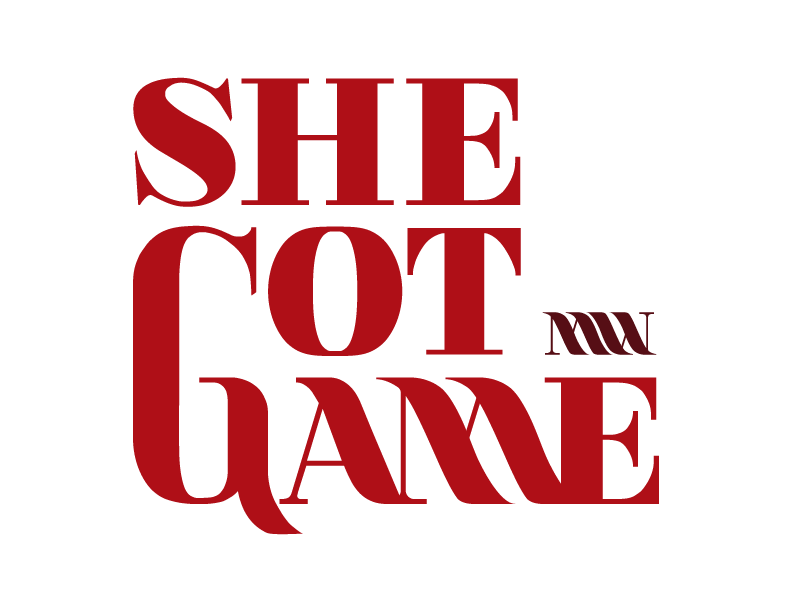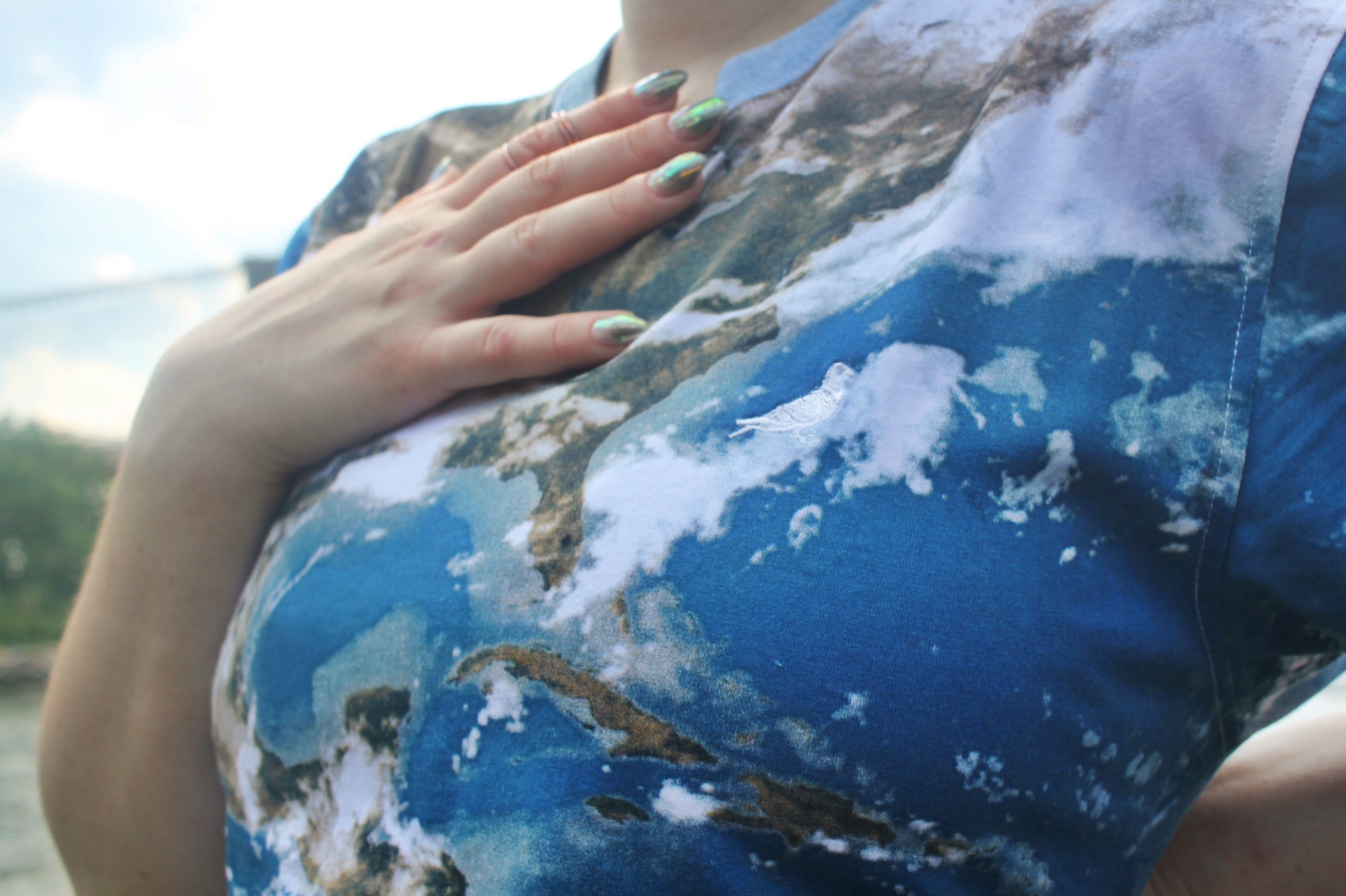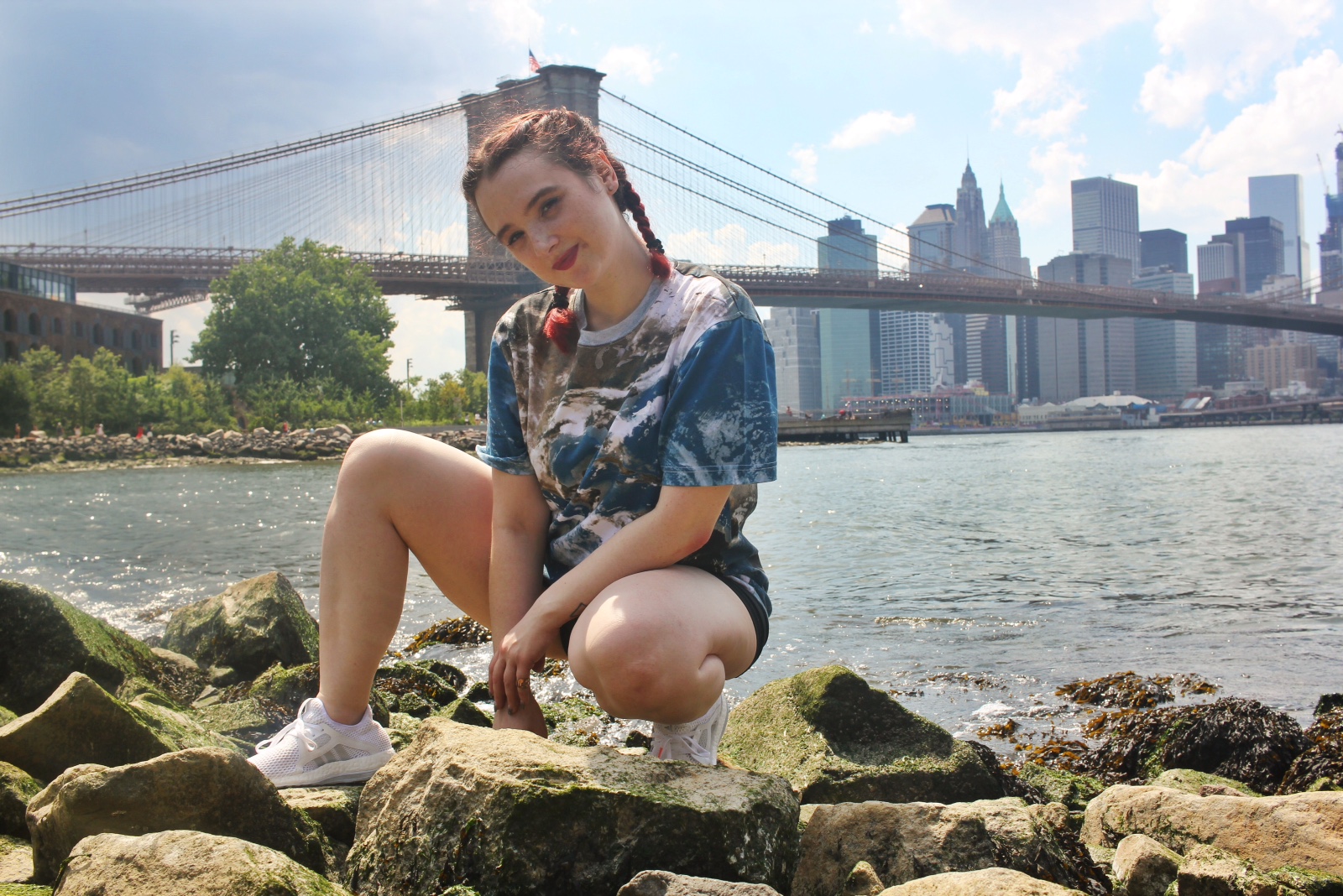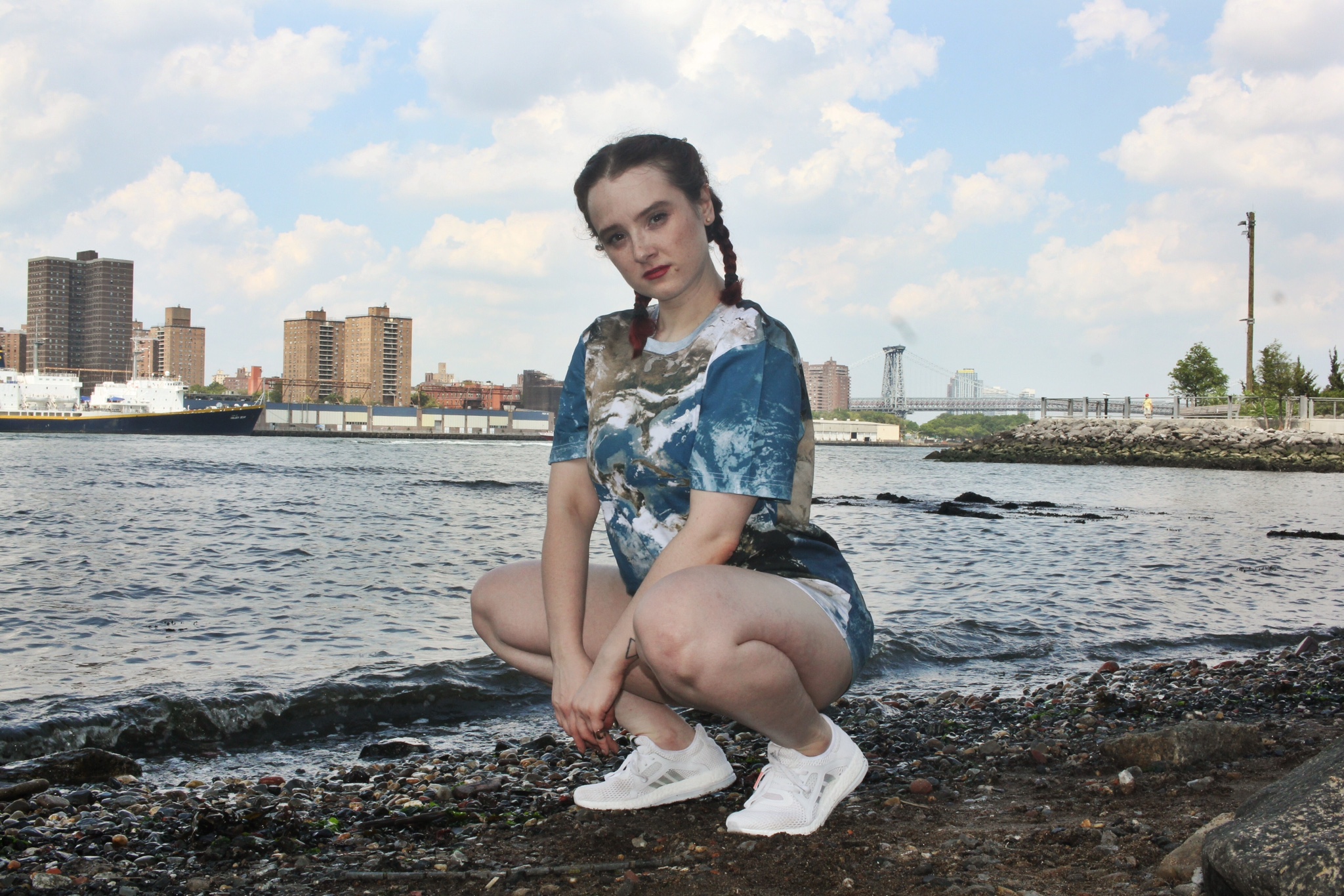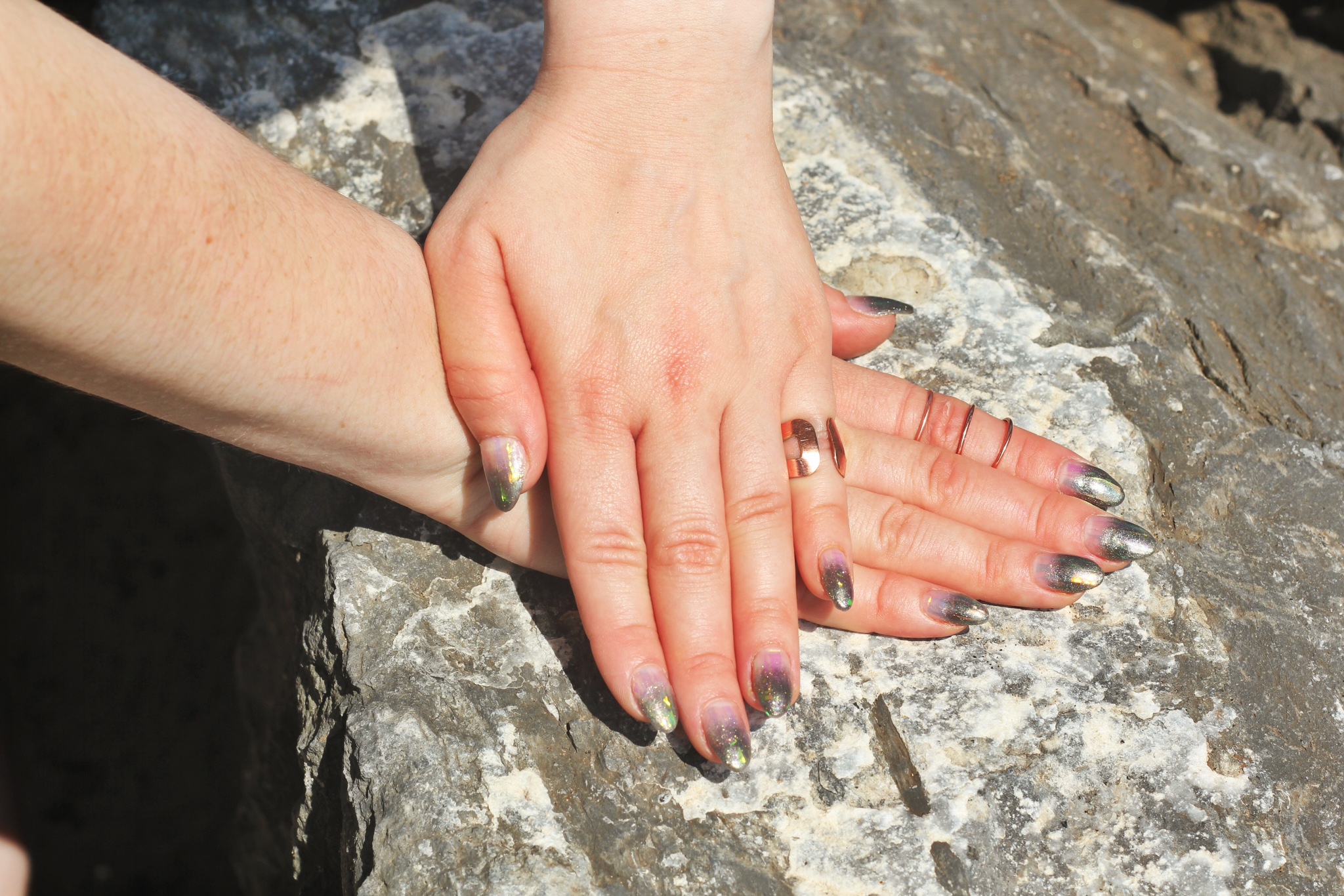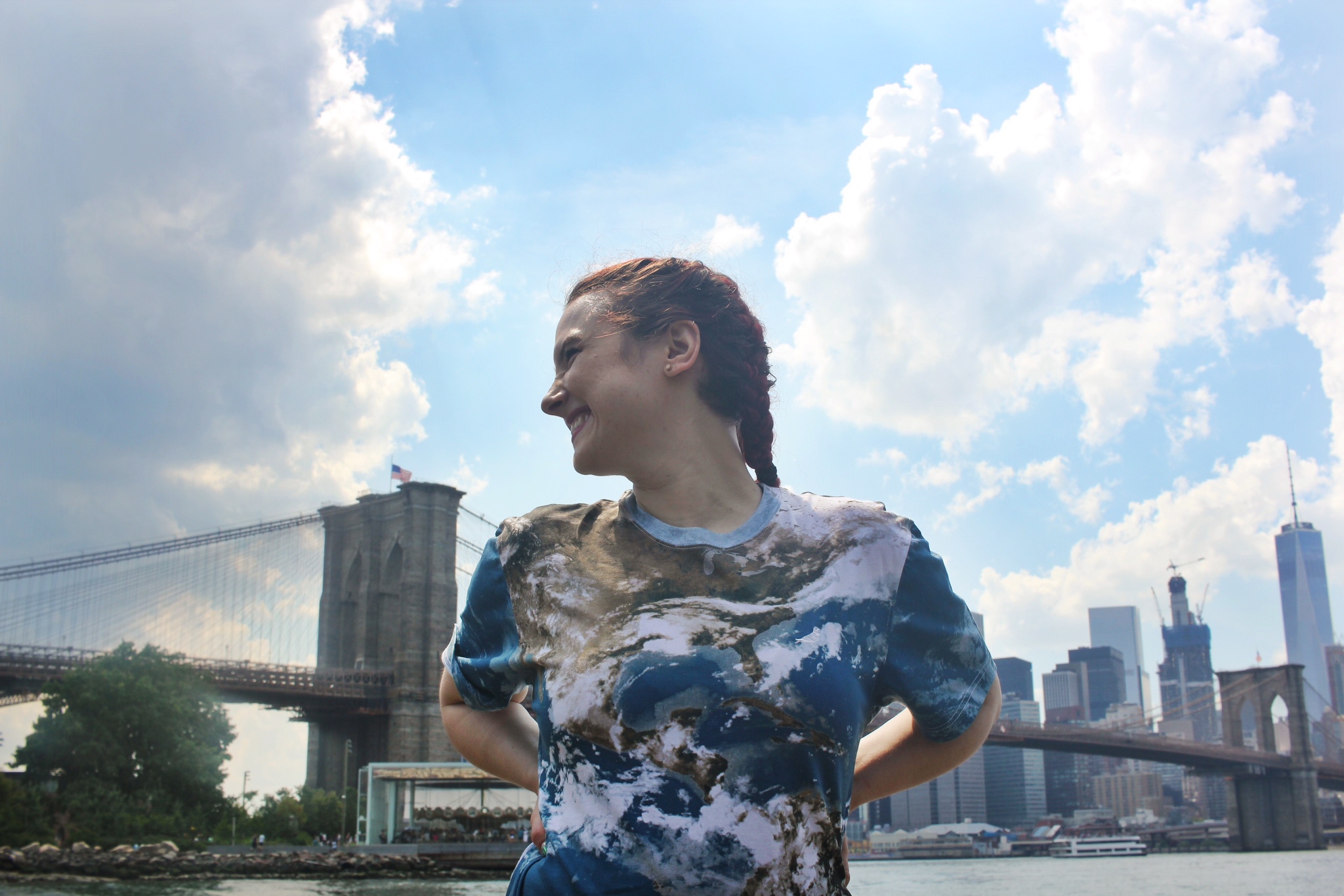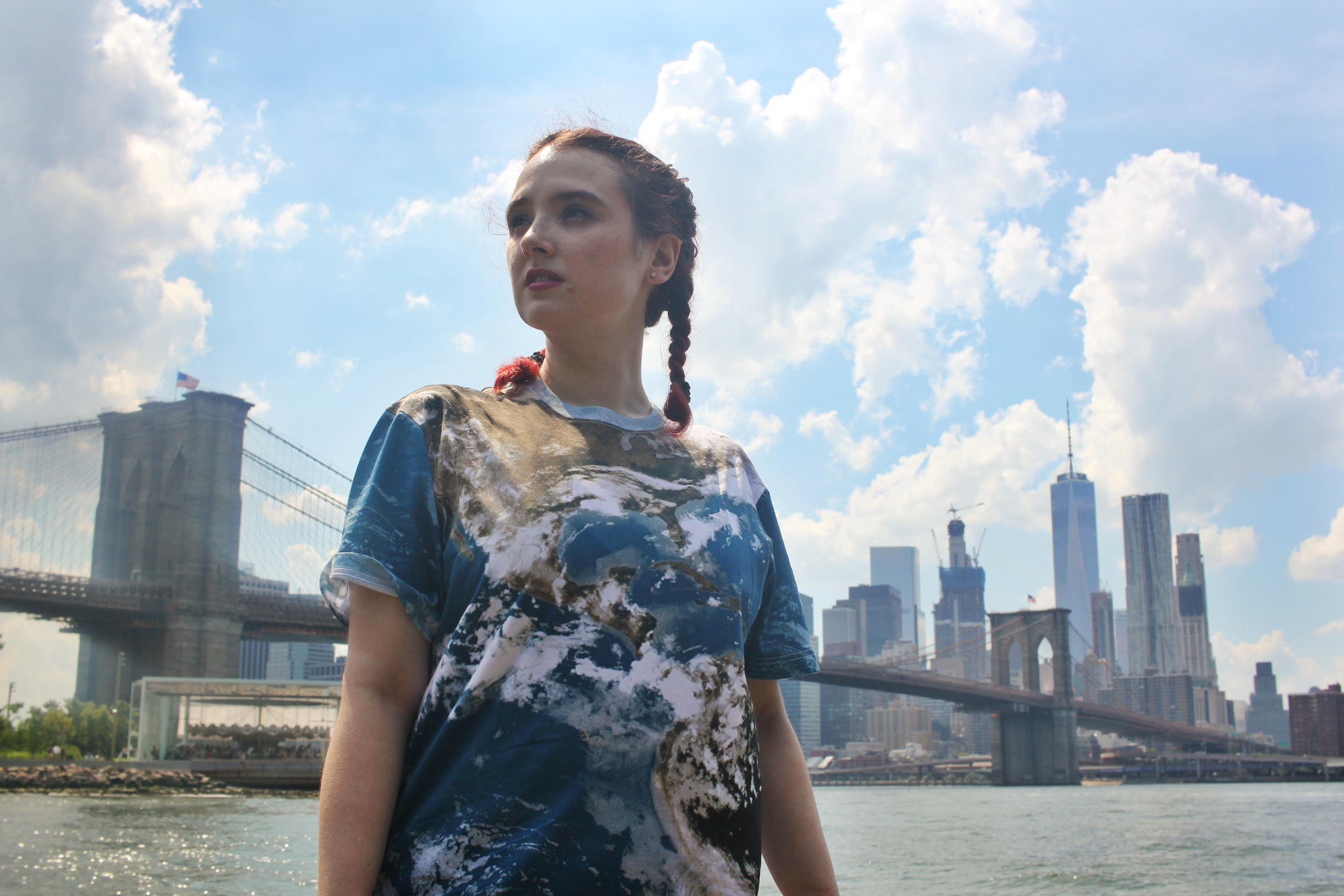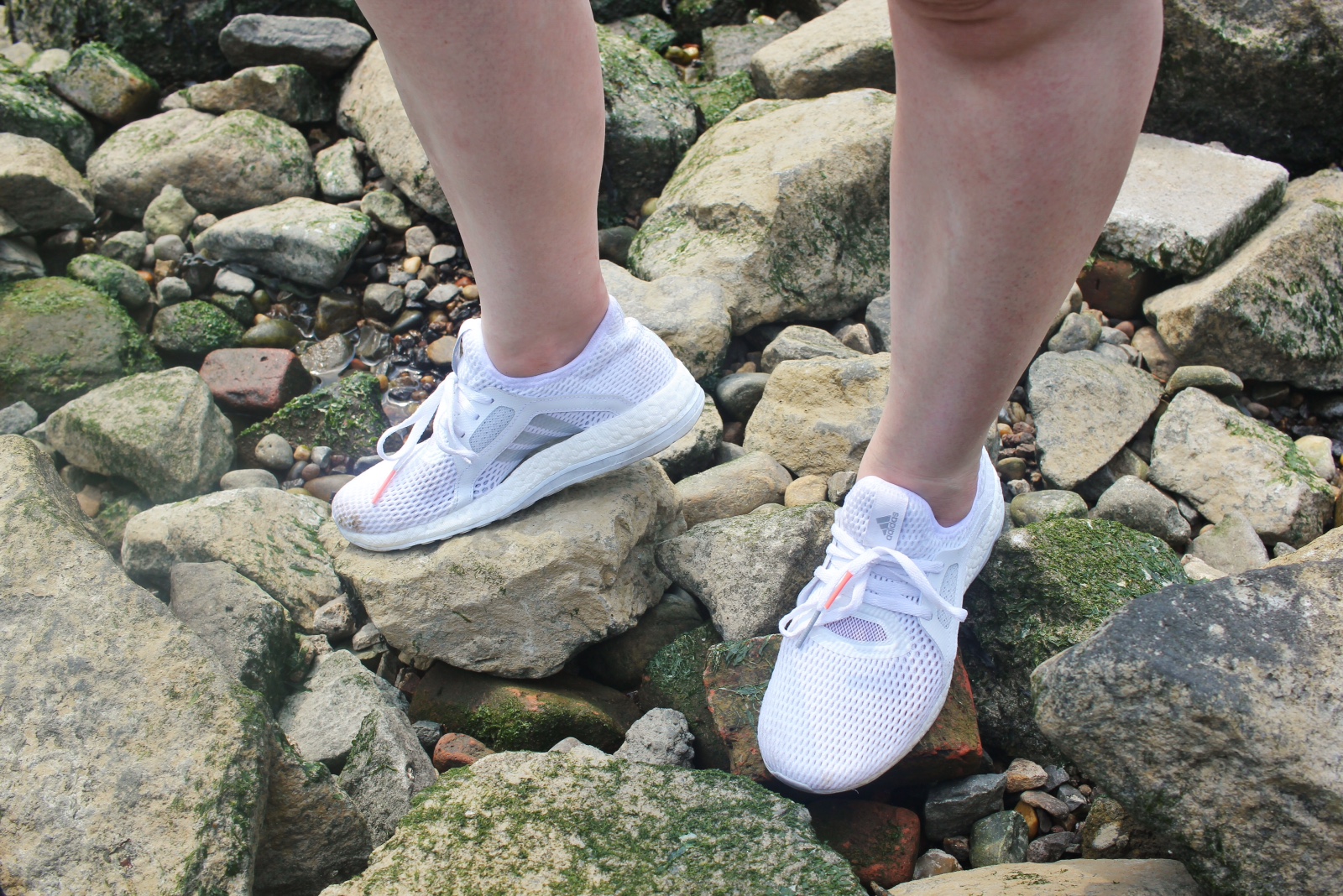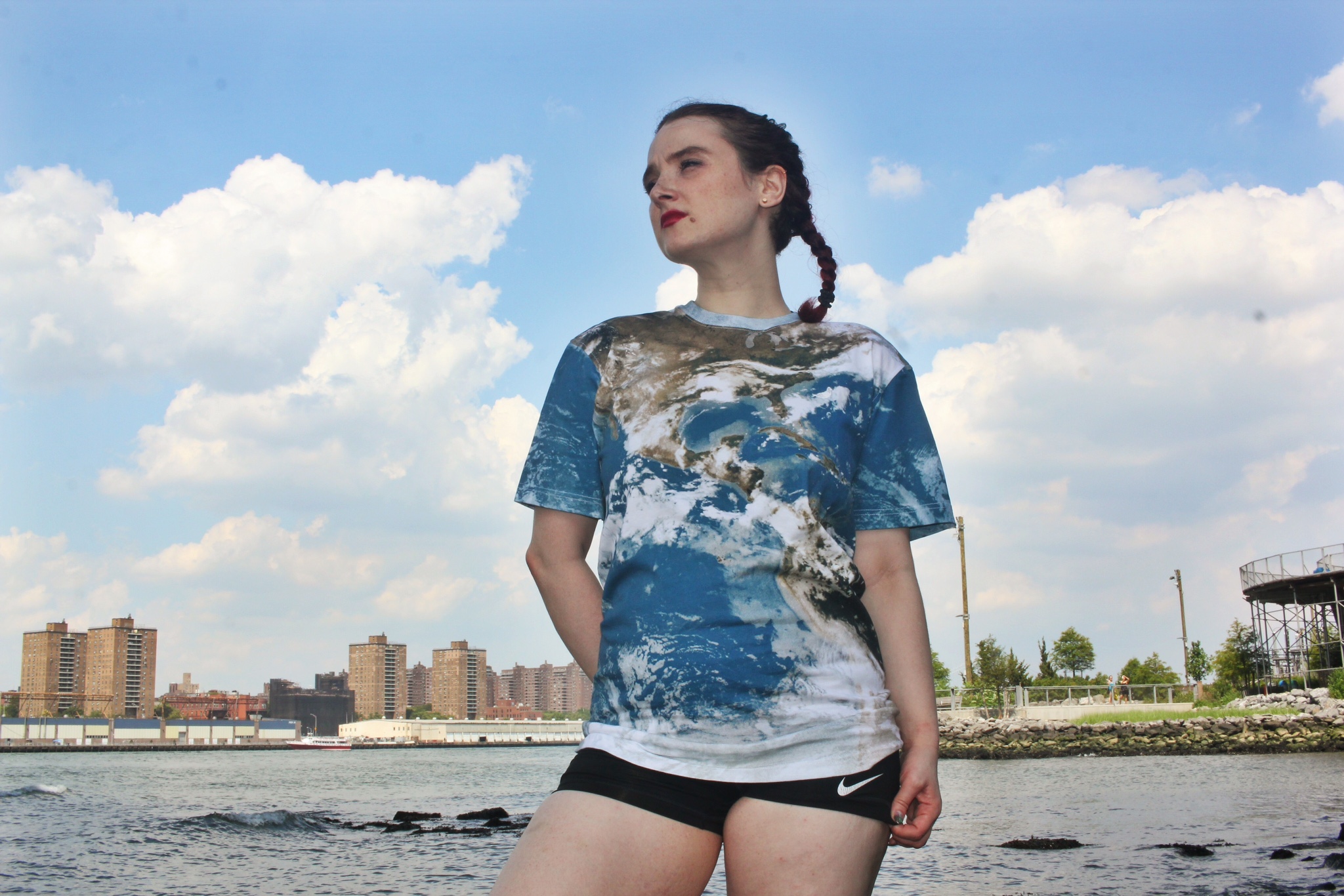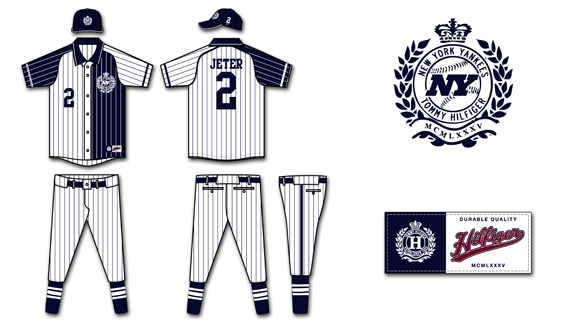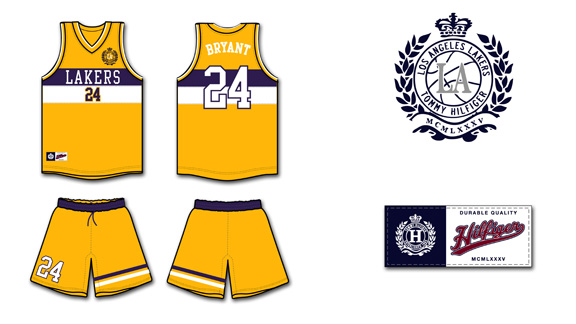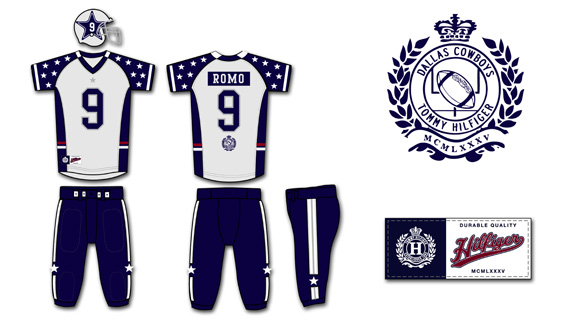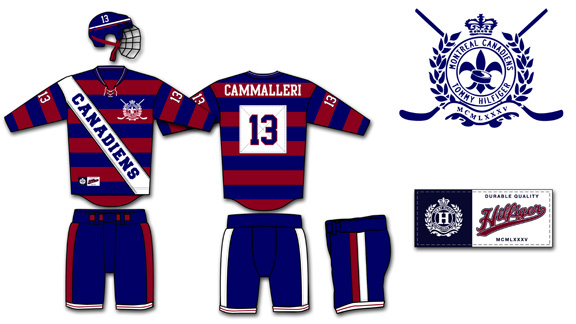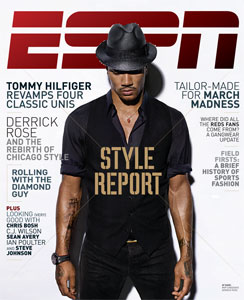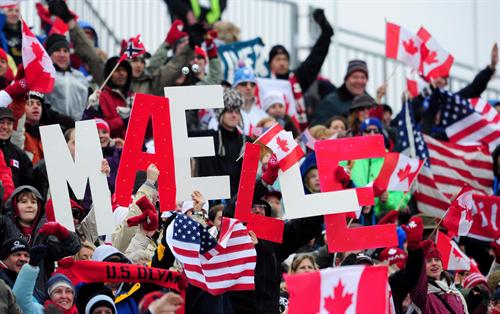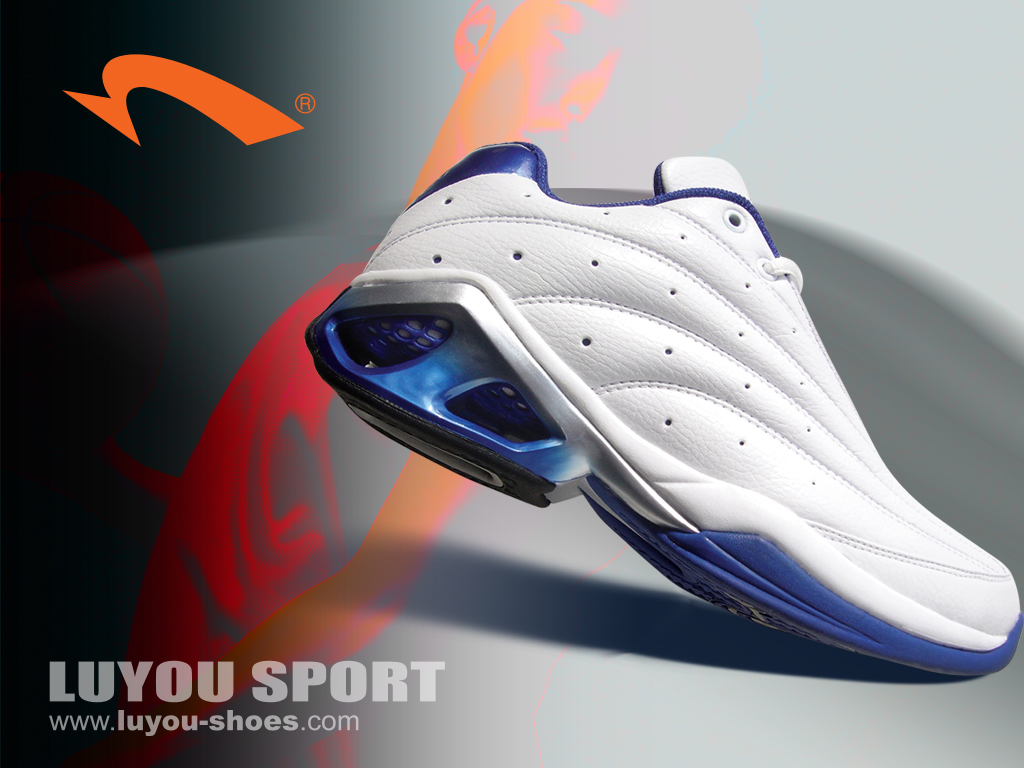
#shegotstyle - Sporting StaplePigeon for the US Cozy Girls series
Collaboration is a necessary part of the creative process. I'm always open to meeting all kinds of artists and content creators in hopes for being part of a great project. Recently, photographer Jeff Stashbox messaged me about doing a shoot for his US Cozy Girls series. The photography series features women in "cozy" (comfortable, athleisure, casual) wear out and about in New York City. Despite the espnW columns and my Instagram posts - I'm not 100% comfortable in front of the camera "modelling". I almost always prefer to be on video, discussing something I'm passionate or working behind the scenes than posing. I wish I had more "cozy" gear in my luggage that I didn't already shot for images, but the good people Staple Pigeon gave me this great tee to sport. I paired it with my trust Nike Pro 3' Combat shorts, my new adidas Pure Boost X running sneaker that Champs recently sent me (I'm obsessed with the two tone laces) and my trusty Céline sunglasses. Despite the insane heat, I quickly found my comfort zone crawling around the rocks and water by the Brooklyn Bridge. I got a little too cocky, as I slipped on some rocks and ended up with a giant bruise and sprained hand. Ooops. Check out the shots below and let me know what you think! Thanks to Jeff for involving me in the series, be sure to support his work on Instagram.
Wardrobe credits:
- Staple Pigeon satellite t-shirt (on sale!)
- Nike Pro 3' Combat short
- adidas pure boost x sneaker courtesy of Champs Sports (white/silver/metallic grey/clear grey)
- Céline sunglasses
- Nails by Jessica Tong at Hello Beautiful Salon
- Hair by Katie McGuigan
High Fashion on the Field: Dolce and Gabbana Extend Deal with Azzuri
When it comes to professional sports, you often see high fashion brands on the backs of athletes off the field but never during game play. However, it should come as no surprise that soccer (or football, out of North America) is the first sport to really embrace fashion on the field. Many soccer players in Europe have modeled for brands,have enviable closets that resemble high-end boutiques and are often credited for bringing the slim, slick suits to the sporting world. Only in recent years have North American athletes began adopting the "Euro" style of dress and swagger.
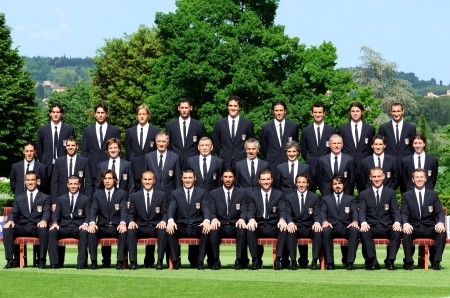
Today, Dolce and Gabbana announced that they would be extending their deal with the Italian national soccer team through 2014. The Italian fashion house will begin designing kits for the men's senior team for the qualifications of the 2012 UEFA European Championships as well as the Under-21 squad. The collaboration originally started in 2006 after the men's national team (also known as Azzuri) won their fourth World Cup. Dolce and Gabbana's old deal had them dressing the Italian athletes in suits for pre and post game, but not on field. Azzuri's previous jersey outfitter was German sports brand Puma. 2014 is a significant year as it marks the next FIFA World Cup in Brazil. Italy will be trying to capture their fifth World Cup after falling short of defending their title in 2010.
The Italian national team isn't D&G's first foray into soccer sponsorship. They sponsor local Serie A squad AC Milan and they've also been clothing the Milano Beach Soccer Club since 2008. D&G also produced a book dedicated to the players of AC Milan appropriately titled Milan Fashion Soccer Players Portraits this past May and have used athletes for underwear advertising editorials.
What team or sport will we next see embracing high fashion on the field? Stella McCartney designs tennis gear for adidas and the Williams sister ae known for pushing the boundaries of costume attire with their on-court attire with Nike. Fashion often takes cues from sport using football pads as armour for models and varsity jackets are now synonymous with streetwear. Rafael Nadal has stripped down to model for Emporio Armani while Dwyane Wade is collaborating on watch collections - sports and fashion are no longer odd bed fellows but frequent collaborators.
Leave the Classics Alone: Tommy Hilfiger's Uniform Re-Designs for ESPN the Mag
Every year when the ESPN Style Issue drops, I feel like a kid at Christmas. How will the worldwide leader in sports cover the niche of aesthetics and athletics in print and online? I approach this issue with a critical eye: partly because I hope to edit it myself in the near future and because I hold the subject very close to my heart and my wardrobe. Naturally, this year's style issue features a column on uniforms, the organized sports version of the runway show. The uniform in gameplay are much like the garments in a runway show. They are classic and minimally styled but punched up with talent - like the Yankees big sluggers or a Calvin Klein show with super models walking. Or, they are outlandish or seemingly impractical like a Hussein Chalayan's robot dresses or the Oregon Ducks infamous technologic gear. Is it wearable, practical and most importantly, will it sell? After all, both sports and fashion are businesses.
For this Style issue, ESPN had Tommy Hilfiger, the iconic Americana designer, re-interpret four classic uniforms - the New York Yankees, the Montreal Canadiens, the Dallas Cowboys, and the Los Angeles Lakers. It was an interesting yet obvious choice to have a heritage designer put his own spin on four uniforms that haven't changed much from their original but beloved classic gear. I would have preferred to have Hilfiger take a crack on the teams that really need help in finding their own identity in their brand and style. The Oklahoma City Thunder, the Jacksonville Jaguars, Arizona Diamondbacks and the Phoenix Coyotes are among many teams that could all use a professional's touch in the design department.
It would need a total brand overall and a lot of space, styling and graphic design in the magazine. However, using North American's most popular teams as an example are a way to drive page views, debates and sheer terror in the hearts of fans and jersey aficionados alike.
Out of all the designs by Hilfiger, I feel that the New York Yankees' uniforms were the most disappointing. I'm a Mets fan, but even though my green-eyed MLB monster may look to the Yankees' roster with envy, I'll always admired their pinstripes. There was uproar when names were to be added to the player's shirts - you don't mess with the classics and a certified money-maker. Hilfiger was smart enough to stick to pinstripes at least, the root of the Yankees style. However, using constrasting colours on the back and front of the uniforms was a mistake. Two different pinstripes at the same time would be dizzying to the cameras as would the use of both white and blue as it would be tough for the cameras to focus on the bright white as it would glow in the outdoor sunlight and under the stadium lights and balance it with the deep navy. Not only would it look poor on broadcast but it would be difficult to wear for thicker players to wear. Can you imagine a big man like C.C. Sabbathia half in navy and half in white - colour blocking with stripes would not have a slimming effect on the hefty pitcher.
The "NY" in the Tommy Hilfiger crest looks more like the New York Jets logo than the slim Yankees logo. It's been imitated, tattooed and emblazoned on millions of ball caps - but it's never bested. You can't mess with that classic logo. The font of the numbers is fine and reminiscent of the original font the Yankees use now, however the placement on the chest looks too low and with the Hilfiger crest on the opposite chest, it puts so much emphasis on the top half. The use of button and polo collar are not practical for baseball. A big part of speedy Yankees like Curtis Granderson, is the ability to steal bases and sliding on all those buttons isn't safe - they could chafe or open while in play. I like the pants as they're simple and the socks with vertical stripes are very classic. However, all the pinstripes and colour blocking just muddies up a usual clean jersey.
The Los Angeles Lakers' current gold and purple home jerseys haven't changed much since their move to the city of Angeles from Minneapolis. The shorts are longer, the font is crisper and the material is more advanced but the classic, retro style remains. Hilfiger says his inspiration comes from sailing motifs in his own collections however I'm not sure why players would want to look like a sail. The purple and white stripes are somewhat awkward across the chest, widening that area and not lengthening players, which would be more aesthetically pleasing. The beautiful Lakers front was replaced with a boring, basic font that would look better on a typewriter and not a jersey. It's very small and white, which would be difficult to read on the bright yellow on camera and in the arena.
I'm glad that Hilfiger used his better judgement against the short-shorts and keeping a long, loose silhouette that the players prefer. Especially after the recent "Fab Five" documentary, where the long shorts were championed with style and swagger. The stripes on one leg of the shorts is visually interesting and echos the horizontal stripes on the jerseys but once again, makes them seem larger. Perhaps if they were on both shorts or on a diagonal layout it would be more flattering. I don't mind the number on the shorts, however it shouldn't be bigger than the number on the front of the jersey, it should be smaller or equal in size. The crest on the front of the jersey looks tacked on and that's where the NBA embroidery is meant to go. It would look better scaled down and on the back of the right leg of the shorts.
The Cowboys, partly due to owner Jerry Jones' constant chatter, are "America's team". They're the second most valuable sports franchise according to Forbes, only Manchester United bests the blue and silver. I find the Cowboys uniform to be the most aesthetically pleasing of the four re-designs as it is somewhat loyal to the original version. However, the uniforms are overly embellished. The concept of having the infamous Dallas stars all over the sleeves to represent all the different states that the players come from is a sweet idea and a tribute to the team, however it fails in execution. The sleeves look cluttered and like they belong to perhaps a pewee team - at least the Ohio State Buckeyes keep their small stickers on their helmet, not on their apparel. It would be better to keep the Stars minimal for more impact, like the giant Star on the centre of the Dallas Cowboys New Stadium. The small star and simple lines on the pants are a nice, clean look. I like the idea of the American red, white and blue stripes around the middle but it would look better as piping on the bottom of the jersey. However, red, white and blue are not and were never the Cowboys' colours, so why bother including them?
The Tommy crest beneath the player's number on the back of the jersey looks tacked on and would look better at the very bottom of the jersey or above the number and scaled down. On the famous silver Cowboys' helmet, Hilfiger enlarged the Star and added the player's number inside the star. The problem with this is the number will change depending on whether the player wears one number or two and certain numbers are blockier and take up more room than others. The changes in sizes and scale wouldn't look clean and I think the old adage of "if it ain't broke, don't fix it" applies to the original Cowboys' helmet.
The Montreal Canadiens (or the Habs) are a member of the original six franchises of the NHL. The Canadiens' centennial celebration lasted two full seasons as the team re-released their original hockey sweaters worn during the early years. Most designs were well received and one of the most polarizing among fans was fittingly the red and blue barber pole style. Hilfiger used the horizontal stripes, a favorite of his, in his design of the Habs' uniforms. The stripes are popular in Hilfiger's main inspiration source, rugby shirts, as well. To quote the rapper Cam'ron, "I love Rugby to death, made that my baby's name" and while Cam'ron may have referred to Hilfiger's competition, the Ralph Lauren Rugby brand - I, too, have no qualms with most rugby designs. The diagonal white sash though looks more fitting for a beauty queen than a hockey player. The white is distracting and the font is very basic. It looks so cluttered and the infamous Hab logo is nowhere on the jersey - that's practically sacrilegious in Montreal.
When it comes down to the details, I like the Habs' new crest the best out of all the Hilfiger designs. The use of the fleur de lys is a nice touch, even though it was the logo of the former arch rival Quebec Nordiques. The font is nothing special, but like lettering that is used on most NHL jerseys. The numbers on the sleeves could be scaled a bit larger as they will look very small once they are over muscles and equipment. The pants are clean with simple stripes and would work with either red or white jerseys. The ties on the jersey neckline are now common on retro designs usually worn as third jerseys and fits in with the heritage of the Habs. The white patch that the numbers are sewn on is unnecessary and another layer of fabric would weigh down the uniform. Most jerseys in the NHL are incredibly lightweight to help wick sweat and so many pieces of fabric and embroidery would make it heavy and impractical.
I'm not impressed with Hilfiger's design direction of these uniforms. Designs will change with the trends but the original four jersey designs are classics. They will be tweaked over the years depending on fabric and cut of the league standard uniforms (such as the adidas contract with the NBA) but scale and . If Mr. Hilfiger wanted to make a significant design statement he should have gone all the way and done something completely out of the ordinary and not merely remixing the originals. I would love to see ESPN push the envelope in their Magazine style issue in the future.
Maëlle Ricker: Not Your Average Olympian
How do you differentiate between an athlete and someone who only participates in a sport? Do you need to be a professional to earn the athlete title? My sport of choice is snowboarding. I competed briefly and taught at a local ski hill. When I wasn't chasing my students, I was spending my spare time hunting for powder on the icy East Coast and destroying my body in the snow park. It was a badge of honour to show up hung over or bounce right back from a concussion and crank big turns. Snowboarders, back when I started in the late 90's, were almost like the hip hop alternate to skiers - we weren't jocks, we were the stylish outcasts. We wore our pants low and our heads were covered in oversized goggles, headphones and tall toques. It was about style and speed, not athletics.

Recently, Gatorade contacted me about speaking with one their marquee athletes to launch the G Series line here in Canada. I was surprised that the athlete in question was Olympics gold medalist and World Cup snowboard cross athlete, Maëlle Ricker. Maëlle captured the country's heart when she was the first woman to win gold on home soil. A Vancouver local, she grew up in the mountains, with parents who "eat, breath and speak skiing". She started snowboarding after her following her old brother's lead and was instantly hooked. For Maëlle, snowboard cross made sense because she was able to combine all of her snow skills. "I have my background in ski racing when I started snowboarding I was all about freestyle, I wanted to jump and do the half-pipe and all that. When I tried snowboard cross, all my different sporting backgrounds, […] kind of combined into an event that I excelled at. I had the freestyle skills from riding and sort of the race skills from ski racing".
Snowboarding has gone from a fringe sport that many mountains outlawed to a marketable, professional and perhaps most importantly, an Olympic sport. Maëlle agrees that snowboarders don't necessarily like the athlete title that comes along with the professional designation, "there is this misconception that snowboarders aren't working out, they're not trying". Maëlle said at the High Road Communications office in downtown Toronto. She was wearing jeans, a Gatorade zip up and a pair of practical platform, waterproof knee-high boots. "...That's just the image we like to give off. We actually are working our butts off. We're out on the hill everyday, all day. We are in the gym in the afternoons and in the offseason". I remember powder days where we would go out for hours on end without food, water and sometimes, not even an iPod. But times have changed and Maëlle is endorsing Gatorade, one of the most recognized brands in sports and an icon in athlete branding. She's one of over four hundred athletes, including Dwyane Wade, Usain Bolt and Georges St. Pierre, that Gatorade collaborated with in developing the new G-Series. Their goal with the G-Series, which launches March 21st in Canada, is to move the brand from purely a sports drink company to a sport nutrition innovator.
But how do these three steps of Gatorade: prime, perform and recover, help Maëlle? She competes in a sport where not only do milliseconds matter when crossing the finish line, but she needs explosive strong muscles when banking turns and going over big air jumps. She likes the series because she's able to use it on and off the hill in riding and work outs, "When I'm on the hill, like for example when I'm at a race, I make sure 15 minutes before I drop in for my heats, I'm taking the Prime, I'm getting the right carbs, vitamins and electrolytes into my system so that I'm at my maximum energy for when I'm riding. Or when I'm riding or when I'm at the gym, it's so important to keep hydrated. Even if you're just slightly dehydrated, like two percent, you're going to be off your game, you're not going to be able to re-act as well, your muscles are not going to respond as quickly as you need them […] When I'm done my race or I'm done my workout, then right away you're beating your muscles down all work out, basically breaking them down and now you have a really short window to recover and to get the right nutrients in so that you're building your muscles back up to be stronger and ready for the next day. So that's when you're going to be your protein and your carbs and that's the recover part of the line of the G Series".
Maëlle is more than just a snowboarder but also an avid student of the sport. She admits that she's not always paid attention to the training aspect of professional snowboarding. It wasn't until an injury forced her to hit the gym diligently. Tearing an ACL is a common but devastating injury to a snowboarding as all day on the hill, they're flexing and extending their knees for turns, jumps - they're like human shock absorbers."That's the first time I was really serious about making sure I was fit and ready on my board […] the last few years working a lot with board technology and […] today working with sports nutrition. We've had nutritionists in the past with the team and they've been awesome but just being a part of this Gatorade family and testing this new G Series line and having that integrated into my personal program, it's really cool".
I had to ask Maelle more about the style aspect of snowboarding, being someone who's into the fashion as much as the frontside spins. Snowboard cross may not ooze swagger like other events, but Maelle recognizes rider's signatures just as easily on the course as the half-pipe "…Everyone has their own style on the course. I mean, you know your competitor, you can see them from a mile away, you know who it is just from the way they ride […] I don't know how people describe my style […] I hope nothing negative!". When it comes to her on snow apparel, she always choses comfort over fashion, favouring baggy pants, long jackets and more basic colours like blues, greens and reds. Besides her own Olympic gear, which she called "super tech […] and ready for the miserable weather", she liked the faux jean outfits that the American team was wearing. She’s had a chance to work on the more performance area of apparel as well as board technology but hasn’t designed any of her own gear.
Maëlle snowboards for the love it, her eyes light up when she talks about free riding and mountaineering to further her exploration of the beloved backcountry. The training, along with World Cup events last all year round, which suits her just fine as she's never been one to sit still. When it came to preparation for the Olympics, Maëlle had a very no non-sense approach, "the thing with the Olympics, even in my hometown, I still treated it like another World Cup. I didn't drive my car [...] I went on the bus with the team. I made sure before I competed that nothing was drastically different from when I competed with the team in the rest of the season. Obviously, after the event, things got kind of crazy […] I was really happy to be back with my team in Europe and racing again, I felt like I was back in my skin and at my comfort level".
Winning the Olympic gold medal has afforded opportunities but also a few challenges, "It's forced me to learn a different side of snowboarding - the business side. I've probably matured a lot in the last year. But, I've had some amazing opportunities with ACT Now BC and Kid Sport Canada and then I get the chance to align myself with companies I believe in". Where does she go from here? Olympic Gold medalist, Winter X-Games gold medalist, Gatorade endorser - what more can she do? "I'm still progressing and still moving on an upward slope in boarder cross and I'm looking forward to keep pushing myself in the next few years. And I'm also really passionate about free riding and being out in the backcountry - I have the mountain right at my doorstep".
Maëlle's honesty and laid back love of the sport is inspiring. She may not ooze style through what she wears but her riding and patronage of the sport is contagious. She’s not your typical athlete but she proves that you don’t have to be a typical jock or fit the image of the stereotypical snowboarder to succeed - she walks the fine line, all for the love the powder turn and the going for the gold.
For more on Maëlle, you can click below to read the transcript of our interview below. Special thanks to Laura from High Road Communications and Gatorade Canada Team.
Megan Wilson: How did you start snowboarding?
Maëlle Ricker: I kinda grew up in the mountains, my parents sorta live, eat, breath, speak skiing. So when I was younger I was ski racing, I followed big brother and started snowboarding and I kind of got hooked on that.
MW: Did it make you more competitive, learning from your brother?
MR: He definitely pushed me. When you're out riding with all the older guys and you're only girl, you don't want to be holding up the crew, you don't want to be a pain in the butt. You want to be part of it.
MW: How did you end up doing snowboard cross?
MR: It's kinda bad, but I've never even tried racing...never been in hard boots. I think I have my background in ski racing when I started snowboarding I was all about freestyle, I wanted to jump and do the half-pipe and all that. When I tried snowboard cross, all my different sporting backgrounds, all of that experience from that, kind of combined into an event that I excelled at. I had the freestyle skills from riding and sort of the race skills from ski racing.
MW: It just kind of made sense?
MR: It's neat. To be a snowboard cross rider you have to be an all-around rider because you're getting a little bit of everything. Which is really neat because I think it's the one race that really combines like all elements of snowboarding.
MW: Do you still get a chance to do more free riding? Do you find you can bring your style to snowboard cross?
MR: For sure. I love free riding. I love getting out on my split board and going out in the back country. And, snowboard cross is becoming more and more specific, you really do need to train and work hard at snowboard cross but at the same time, but at the same time, everyone has their own style on the course. I mean, you know your competitor, you can see them from a mile away, you know who it is just from the way they ride.
MW: How would you describe your style? How could someone watching a snowboard cross event pick out Maëlle on the hill?
MR: I don't know how people describe my style. Hopefully nothing negative. (laugh) I'm not sure, I definitely come from the freestyle side of the sport.
MW: Talking about training. When did you have to start focussing on the off snow training?
MR: That's a good question because there is this misconception that snowboarders aren't working out, they're not trying. I think that's just the image we like to give off. We actually are working our butts off. We're out on the hill everyday, all day. We are in the gym in the afternoons and in the offseason. We're on the bikes training and getting our cardio up. I think one of the big turnarounds for me was the first time I tore my ACL and I got back into the gym to rehab properly and really put in the hours. And that's the first time I was really serious about making sure I was fit and ready on my board. And things have just kind of progressed from there, you're learning more about the sport science of everything and the last few years working a lot with board technology and that kinda thing and now being here in Toronto today working with sports nutrition. We've had nutritionists in the past with the team and they've been awesome but just being a part of this Gatorade family and testing this new G Series line and having that integrated into my personal program, it's really cool.
MW: Ever since you tore your ACL, did it re-motivate you and make you see the sport in a different way?
MR: I think it just made me a little more serious. If I want to last as long as I want in my snowboard career and be able to do the things that I want to do and your body has to be able to take a hit and stand up afterwards and get up and try it again. If you're not falling in a day, it means that maybe you're not trying hard enough or that you're that good.
MW: Now, how goes Gatorade and the G-Series factor into your nutrition and training both in the off-season and when you're on the circuit competing?
MR: Well I use it off and on season. With the series that's coming out, there's pre, during and post exercise items so you can incorporate that into my gym training, as well as when I'm on the hill. When I'm on the hill, like for example when I'm at a race, I make sure 15 minutes before I drop in for my heats, I'm taking the Prime, I'm getting the right carbs, vitamins and electrolytes into my system so that I'm at my maximum energy for when I'm riding. Or when I'm riding or when I'm at the gym, it's so important to keep hydrated. Even if you're just slightly dehydrated, like two percent, you're going to be off your game, you're not going to be able to re-act as well, your muscles are not going to respond as quickly as you need them to so that's pretty huge, so that's where the perform comes in which is the Gatorade or the G2. And then as well after when I'm done my race or I'm done my workout, then right away you're beating your muscles down all work out, basically breaking them down and now you have a really short window to recover and to get the right nutrients in so that you're building your muscles back up to be stronger and ready for the next day. So that's when you're going to be your protein and your carbs and that's the recover part of the line of the G Series. And so, I could use that on a long free ride day. If I'm doing peak to creeks in Whistler all day. In the past, I'd go up there and ride for six hours and not even stop for water - how stupid is that? How easy is it to have Gatorade with you. And now water isn't enough, you need to be replacing the sodium and potassium and all those things are going to allow you ride day after day. I mean you could have six powder days in a row, you gotta maximize!
MW: Do you feel a lot better physically than in the past now that you know how to train and what to eat and drink?
MR: For sure. When I'm on it and when I'm using the product and we've been testing it for about six months - ya it's not much easier. I think it's the repetitiveness, when you're out there constantly pushing your body and you're not fuelling your body properly, your body can only do so much, you gotta keep on top of those kinds of things.
MW: Is your training a lot different from when you're in season than during your off-season?
MR: Well I train in cycles, right. You can't always be lifting the heaviest weights or doing the longest runs or whatever, sort of in phases. So like in the off-season, the beginning of the off-season, you'll start working on base. You'll start with cardio, working on all the little muscle things, make sure all the right muscles are firing at the right time. And as you work up, towards the season you start putting in heavier stuff, some squats and building up the strength. And then as you get closer and closer to the season, you start doing all the fun stuff. That's like the plyos, the Olympic lifting, getting all the explosive muscles working and then when you're in season it's all about trying to maintain what you spent the off-season building. So then, you;'re kinda hanging on for dear life as you're snowboarding during the day, but you still have to be at the gym making sure that your body will be able to stay strong during that long stretch in the winter. You're not always able to go and lift weight everyday because you already did like 3000 squats on your snowboard when you're on the mountain. That's recovery, making sure you're on the bike everyday and you're well rested.
MW: I guess you don't really ever get a break?
MR: There's always something, which is good because I don't like sitting around so it works well with your lifestyle.
MW: Do you get to travel in the offseason to South America or Australia and New Zealand?
MR: Ya, we have a World Cup every September usually in Chile or Argentina. The last few years it's been in Argentina so that's pretty cool. It's a bit of a funny schedule because we have this World cup in September then we don't compete again until December. But, I've been to Australia the year before the Olympics. Last summer we went down there and trained with the Aussie team and did some races, so that was tons of fun.
MW: It must feel like being back at Whistler with all the Australians that live there.
MR: Ya, we have such a good rapport with the Aussie guys. We share training facilities and they come up and train with us and we go down and train with them, it's a pretty good little deal.
MW: Do you get a chance to work with board technology at all like you did with Gatorade and really customize what you ride?
MR: I race on Oxess, they're a Swiss company and they make custom snowboard cross boards. Technology is changing constantly, especially in snowboard cross, they're quite specialized now. There's nobody on tour now who isn't on a boarder cross specific board. We do have a tech that travels with us full-time, sometimes we have two, depending on the event, boarder cross, there's so much gliding you need a fast base if you want to be competitive. You want somebody who knows exactly the science behind getting your board much like how you're fuelling your body, your board is a huge part of it.
MW: Do you get to customize exactly what you need? Is it a one of kind board?
MR: Oh yeah. We had a great tech leading up the games and we had a shop in Squamish where we grinding the boards and getting the ride texture on the base for the right snow conditions. You'd show up at an event with like four or five different boards and depending on the snow conditions, and what the course is like, you chose your board accordingly.
MW: At the Olympics you were given gear, do you get to put your own signature or style on it?
MR: A little bit. Especially with our race stuff we did some research with some people who made racing suits. A lot of time I'm just all about the comfort, I like the baggy pants, I like room to move. I love long fitting things, having a jacket that covers my bum and just something like that. There's obviously a huge style element to snowboarding and the trends change every year.
MW: There's the whole tight pants craze...
MR: I'm a big fan of the looser pants.
MW: What did you think of the Olympics gear you got?
MR: It was nice, for sure. It was super tech stuff. It was good. We had some miserable weather, and the last thing you want to do is be in some gear that's not made for the rain.
MW: Style wise when it comes to apparel, who really stood out to you at the Olympics or on tour?
MR: The Americans had the faux jean thing going on. They got a lot of press about that. I actually quite like it, I think it's cool but I don't think everyone shares my opinion.
MW: Do you like bright colours or neutrals?
MR: When you're doing photos and stuff you want to be in bright colours so you pop with the camera. But my favourite colours are greens and browns and reds.
MW: Who's your favourite rider when it comes to style, or who do you really like to watch? I read that you grew up riding with Natasza Zurek who has amazing style, was she someone who influenced you?
MR: For sure, Nat (Natasza Zurek). She's such an amazing rider and definitely at the forefront of Canadian women's and the world women's snowboarding for so long. Um, in the boarder cross course, Mellie Francon from Switzerland, she's a great rider. Of course my teammate, Dominique (Maltais), we have a lot of fun together. Free riding, Annie Boulanger. There's a lot of good Canadian women out there...Marie Francois, she definitely oozes with style, too. [...] We got all these nice mountains, we're taking advantage of it...we're not afraid to get dirty!
MW: Was there anyone growing up who you really admired?
MR: For sure riding with my brother and his friends was huge. Craig Kelly and Terje (Hakonsen), always wanting to check out their video parts. Now so, with free ride stuff that Jeremy Jones is doing with Project Deeper, combining the mountaineering with snowboarding, those adventures...those guys are nuts. Xavier De Le Rue…the lines that he's doing and his approach to the sport. And he's a snowboard crosser, too. The guy is succeeding in both parts of the industry [...] it's hard to balance.
MW: You've won Olympic gold on home soil, but what else do you want to do in your snowboarding career? Do you have any goals in mind?
MR: I do. I'm still progressing and still moving on an upward slope in boarder cross and I'm looking forward to keep pushing myself in the next few years. And I'm also really passionate about free riding and being out in the backcountry - I have the mountain right at my doorstep. I took some mountaineering courses this summer to get some more experience.
MW: Here's a Twitter question from @Ryan_A79. What is it like transitioning from an event like the Olympics back to the regular World Cup tour? It is a big transition, how do you deal with it?
MR: The thing with the Olympics, even in my hometown, I still treated it like another World Cup. I didn't drive my car down to Vancouver to the Olympic Village - I went on the bus with the team. I made sure before I competed that nothing was drastically different than when I competed with the team in the rest of the season. Obviously, after the event, things got kind of crazy - good crazy and that was tons of fun. I definitely was itching to get back on my board and I was really happy to be back with my team in Europe and racing again, I felt like I was back in my skin and at my comfort level. I didn't have a trouble transitioning back to the circuit, I was actually looking forward to it.
MW: You treated it like another event?
MR: Obviously the Olympics isn't just another event but that's how you have to approach it. You make sure that you've been training and preparing for is what you execute.
MW: Do you think since winning the Olympics, you've been offered a lot more opportunities?
MR: It's definitely forced me to learn a different side of snowboarding, more of the business side. I've probably matured a lot in the last year. But, I've had some amazing opportunities with ACT Now BC and Kid Sport Canada and then I get the chance to align myself with companies I believe in like Gatorade. That are out there to push sport in Canada and to be with this company that is doing that is pretty huge.
Made in China: Steve Nash Leaves Nike for Luyou
It seems that this NBA season is a time of transition for Steve Nash. In late 2010, he announced that he was divorcing from his wife. He endured another separation with Amar'e Stoudemire leaving for the Knicks. And now, the two-time most valuable player is parting ways with Nike Basketball, after fifteen years, to sign with a Chinese athletics brand called Luyou. Why the sudden change at mid-season? Leaving major brands for start-ups is a new trend among veteran NBA players. Baron Davis, a noted fashion plate and friend of Nash, was one of the first to sign with an Asian-based company. Davis has his own signature shoe and his Beardman logo literally makes him the face of Li-Ning. Shaquille O'Neal is also part of Li-Ning. Kevin Garnett left adidas to join ATNA and became their marquee player, and not just a member of adidas' basketball "brotherhood".
Why the sudden trend? Are larger companies just not giving enough attention to the superstars? Is it about money? Or about growing their brand as players to ensure longevity once their playing days come to an end? Doing well the Asian market can translate to huge dollars in terms of jersey sales, revenue from signature shoes and marketability with other brands overseas that could continue into retirement. Players like Nash, Garnett and Shaq are so well-recognized in North America that it makes sense to to try to make headway in the world's largest economy. All three players signed with different upstart Chinese brands that are still based in China. Li-Ning opened a store in Portland, the hotbed of athletic gear, last year, but none of these brands have an NBA presence or endorsement roster like Nike, adidas or even Reebok. Why take the risk and leave Nike after so many years?
Sneaker website CounterKicks attained the following statement from Nike:
“We can confirm Steve Nash is no longer under contract with us. We had a great run with Steve and we wish him all the best. We’re extremely pleased to work with the NBA’s top players like Kobe, LeBron, Durant and Wade, who wear our basketball products, the most innovative in the game today.”
The statement seems like public relations speak for "good luck but we really don't need you". Nike has the largest roster and arguably the best talent with Kobe and LeBron but also new young stars like Blake Griffin, whose meager endorsement contract will likely bring a large payday and extension for Blake and huge hype for another signature shoe next season for Nike Basketball. Nash is taking a risk, but he becomes the face of a brand instead of competing with so many dynamic players.
It's curious that the Luyou, Li-Ning and ATNA logos all look reminiscent of the infamous Nike swoosh. At first glance, they look like something that you may find in a knockoff factory in China. Are the companies doing their own swoosh to be recognizable? Is it symbolism or just a copy cat tactic? Perhaps if their logo was something unique, like another Chinese basketball brand, Peak, they would stand out more in North American market. They run the risk of being grouped into the Nike knock off section on the sales floor. However, it does leave room for serious branding for the signature sneaker models, like with what Li-Ning did with Baron Davis. The production process of both the Asian brands and the American names like Nike are likely in the same or or neighbouring factories in China.The incredibly lucrative footwear counterfeit business has another brand to compete with and mimic.
An interesting factor in this recent trend is that both Baron Davis and Steve Nash are represented by BDA Sports Management, an agency known for exposing their clients to a worldwide fan base, especially in China. BDA has a strong international roster of players including Yao Ming. It's also somewhat common for BDA athletes to endorse companies that are new in the basketball footwear market like Brandon Jennings, who is Under Armour's only NBA athlete and at the forefront of all their marketing campaigns. He also signed the contract while playing overseas in Rome, instead of going to college. Under Armour is an American brand that instead of being based in Portland or China, is based in Baltimore, Maryland and is well-known for their apparel, instead of a company like Luyou, which is unknown to North American NBA fans. Nash is Canadian with international roots and is known as the pride of the province of British Columbia. Vancouver has a significant Asian population so that could translate to marketing opportunities, events with the Chinese community and of course, more sales.
What it will really come down for Nash is whether he can sell sneakers to both markets and if it performs well enough for Nash to play in. Luyou's brand slogan is "I think I can" so perhaps the mantra can pay off. Looking at their current offerings in China, they do not seem to have designed basketball sneakers in the past - most lifestyle and casual running shoes. At the announcement in Beijing, the brand had Nash call in videophone and announced that there would be both a charity playground project called "Nash's House" as well as a Nash logo competition. Luyou trotted out diverse models who wore new designs and preached a new vision and direction for the brand. While I do not fully trust the capabilities of Google translate, it seems that Luyou is re-launching in their own market with Nash as the centrepiece. It doesn't seem that there was any plans for worldwide expansion but perhaps that will come later this season or during the All-Star game in Los Angeles. Technically and aesthetically I'm curious to see what the brand comes up with as their other shoe designs look dated and uninspired. Would you wear Luyou shoes? Perhaps only time and availability in all markets will tell. For now, I'm sticking to my Nike's.
